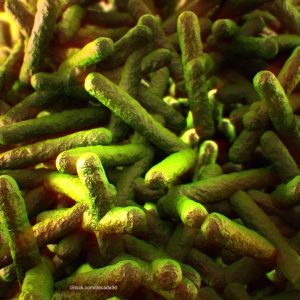Listeria is in the news right now thanks to a string of smoked salmon recalls. But what exactly is this pathogen, how does it get into our food, and what do consumers need to know about it? Dr. Emily Cartwright answered all those questions and more in a podcast about her recently published paper about how listeriosis outbreaks are investigated.
 Cartwright is an Infectious Disease fellow at Emory University and former EIS Officer with the Center for Disease Control and Prevention’ s (CDC’s) Division of Foodborne, Waterborne, and Environmental Diseases. Her paper about foodborne Listeria outbreaks, appears in the January issue of the CDC’s journal, Emerging Infectious Diseases.
Cartwright is an Infectious Disease fellow at Emory University and former EIS Officer with the Center for Disease Control and Prevention’ s (CDC’s) Division of Foodborne, Waterborne, and Environmental Diseases. Her paper about foodborne Listeria outbreaks, appears in the January issue of the CDC’s journal, Emerging Infectious Diseases.
About 1,600 cases of listeriosis are diagnosed in the US every year, according to the CDC. Of those, about 1,500 are hospitalized and 260 die. “So it’s a rare bacterial foodborne disease, but nearly all patients are hospitalized and about one in six people with it die,” Cartwright said. Those most at risk are seniors, those with weakened immune systems from disease such as cancer and AIDS patients and pregnant women. “Listeriosis during pregnancy can cause a miscarriage, stillbirth, or premature labor. Some newborn babies become very ill and some die,” said Cartwright.
Outbreaks of listeriosis are detected through a network of laboratories called PulseNet which all make “genetic fingerprints” of pathogen strains from sick people. The shared information helps to determine if there is a spike in cases and if any of the case patients were sickened by the stain. There is also a specific surveillance system, called the Listeria Initiative, which was designed specifically to investigate Listeria outbreaks.
The paper discusses 24 listeriosis outbreaks that occurred between 1998 and 2008 . “Outbreaks that occurred later in the study period, after 2004, were generally smaller in the number of sick people and shorter in duration. We believe that these improvements reflect better detection of outbreaks through PulseNet and better investigation through the Listeria Initiative. In other words, rapid detection and response to listeriosis outbreaks, finding the contaminated food, and removing it from the food supply, resulted in fewer illnesses and ended the outbreaks sooner,” Cartwright said.
Some of the most important trends identified in the study had to do with the types of food associated with outbreaks of listeriosis, Cartwright said. “Ready-to-eat meats were the most common source of outbreaks early in the study period, from 1998 to 2003. But later in the study period, after 2004, they were associated with only one outbreak.. We know that, after several multistate outbreaks caused by ready-to-eat meats in the late 90s and early 2000s, industry and regulatory agencies responded with interventions to prevent Listeria contamination in ready-to-eat meats, such as hot dogs and turkey deli meat. So this is an example of how findings from outbreak investigations can lead to enhanced efforts to control Listeria contamination, which has national benefits. “




